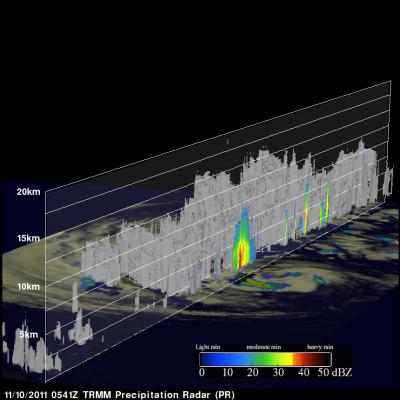Hurricane Nicole Lashes Bermuda
While powerful Hurricane Matthew drew a lot of attention as it made its way through the northern Caribbean and the Bahamas before ravaging the US East Coast with strong winds and massive flooding, another storm was lurking nearby in the western Atlantic--Nicole. Nicole, which like Matthew, also originated from a tropical wave that made its way across the central Atlantic from the coast of Africa. Nicole first became a tropical storm on the morning of the 4th of October about 525 miles northeast of San Juan Puerto Rico just after Matthew, a powerful Category 4 storm at the time, had devastated











